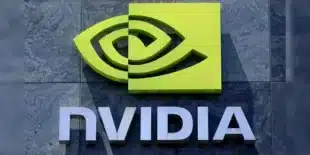A U.S. startup called Proto is gaining attention as the world’s “first holographic communications platform,” bringing life-size, 3D-like video experiences to places such as universities, hotels, and medical centers. The company has developed a large, 400-pound box that stands taller than the average NBA player and creates the illusion of a three-dimensional person through advanced graphical techniques.
These boxes can display both pre-recorded and live video, with any 4K camera, including an iPhone, serving as the source. While the images aren’t true holograms, the system creates a convincing illusion by adding shadows and reflections that trick the brain into believing the person is physically present.
David Nussbaum, the founder and CEO of Proto, shared an example of the technology in action: “We just beamed William Shatner from Los Angeles to Orlando, Florida, to attend a convention he couldn’t physically be at.”
Nussbaum, who started the company in 2018, has a background in radio and podcasting. Proto now employs 45 people and has sold nearly 1,000 units. The company offers two full-size models — the Proto Epic and the more affordable Proto Luma — priced between $29,000 and $65,000. There’s also a tabletop version called the Proto M, which costs $5,900.
Although more expensive than a standard Zoom call, Proto offers a lease option for a full-size unit at $2,500 per month. Interestingly, only one Proto unit is needed for a call, but direct Proto-to-Proto communication isn’t supported yet; both participants still require a separate camera, such as a smartphone.
Proto primarily operates as a business-to-business company, with clients like Amazon, Verizon, Walmart, and the NFL. Nussbaum envisions a future where a smaller, more affordable version could be available for home use at under $1,000.
Nussbaum believes Proto offers a more immersive experience than traditional video calls, saying, “You’re seeing me like I’m actually there. That means our conversation is more authentic and engaging.”
The technology is already being used at places like New York’s JFK airport and the Beverly Wilshire Hotel in California for concierge services. Similar platforms, like Holoconnects in Scandinavia and Google’s Project Starline, are also entering the market.
Proto has also started partnering with universities, including MIT, Stanford, and Loughborough University in the UK. According to Gary Burnett, a professor at Loughborough, students using the Proto boxes felt the lecturer’s presence was so real that they believed the speaker was “in the room.”
In healthcare, Proto is helping doctors at the West Cancer Center in Memphis beam into remote clinics. Dr. W. Clay Jackson, a physician at the center, highlighted how Proto’s life-size, 3D image provides a more immersive and effective communication experience for patients, particularly when conveying complex or sensitive information.
Patients, like Crystal Freeman, find Proto far superior to traditional tele-health visits. Freeman explained that regular virtual appointments often felt impersonal and sometimes suffered from connectivity issues, while Proto offered a more engaging and realistic experience.
Nussbaum also uses Proto at home to connect his family, allowing his children in Los Angeles to “beam” into his parents’ home in New Jersey. He described the experience as a way to create a more meaningful connection, saying, “Sure, you could communicate, but you can’t connect… Watching my parents and my kids have a relationship from 3,000 miles away is one of the greatest things we’re doing.”


